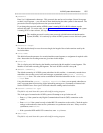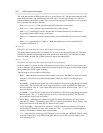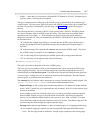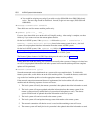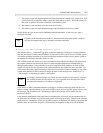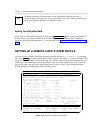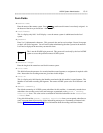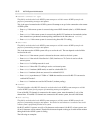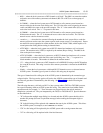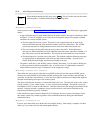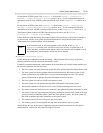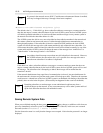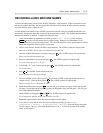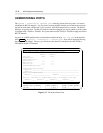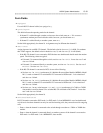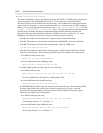AUDIX System Administration 13-13
_ ______________________________________________________________________________________
_ ______________________________________________________________________________________
_ ______________________________________________________________________________________
— 6000 — where the local system uses a DCP channel to call itself. The 6000 is an extension number
assigned to one of the remote system network channels (RS-232 or DCP) or to a hunt group of
channels.
— 9+2346000 — where the local system uses a DCP channel to call a remote system located at a
remote switch, but in the same local dialing area. The 234 is the office code assigned to the remote
switch, and 6000 is the same as the previous example. The ‘‘9’’ is the central office (CO) access
code at the local switch. The ‘‘+’’ is a pause for dial tone.
— 8+7896000 — where the local system uses a DCP channel to call a remote system located at a
different network node. The ‘‘8’’ is the network access code at the local switch. The 789 is the
network access code for the remote switch.
— <number>,,,,, — where the five commas following the number the local system dials to reach the
remote system are used to cause the system to pause (each comma causes a 2-second pause). Pauses
are needed for correct operation in certain modems such as the Telebit T1000, which requires a 10-
second pause after dialing before starting its internal timers.
— ATDT 6000 — where the local system uses an RS-232 channel and modem to call a colocated
system. The attention code (ATDT) is required by the modem (Hayes dialing). The 6000 is the
same as the previous examples.
— ATDT 9,2346000 — where the local system uses an RS-232 channel and modem to call a remote
system located at a remote switch but in the same local dialing area. The ‘‘,’’ is a pause for a
certain number of seconds. This number is defined in the modem manual.
— *23 — where the local system uses a DCP channel to call a MERLIN II acting as the DCP interface
for a non-DCP switch. This string is used to dial a remote system that is colocated at the MERLIN
II (port 23).
— (blank) — where the local system uses a dedicated RS-232 channel to access a colocated remote
AUDIX system. If another type of system is called, a dial string may be required.
The type of channel used for calling out of the AUDIX system is determined by the connection type
assigned earlier. The loop used to get the call back to the AUDIX system and the type of channel used
once the call gets there is determined by the dial string. See Chapter 14 for details on testing the
network.
The following characters, valid only on R1V5 or later systems when a TN539 or TN539B is present,
have special meaning within an AUDIX system dial string. They must be enclosed within double
quotation marks, for example, "x". These characters are not passed on to the switch, modem, or
endpoint in a network call. They are interpreted by the TN539 or TN539B ACCE. Special characters
are described below:
— "W" indicates that multiple-stage dialing is to be used and that AUDIX system should wait for
another dial prompt (dial tone or equivalent message) before sending the subsequent digits or
characters.
— "B" in the dial string will be replaced with a BREAK character by the AUDIX system. This allows
the AUDIX system, for example, to send a BREAK to a modem.
— "CR" in a dial string will be replaced by the AUDIX system with a carriage return character.
— "LF" in a dial string will be replaced with a line feed character.



